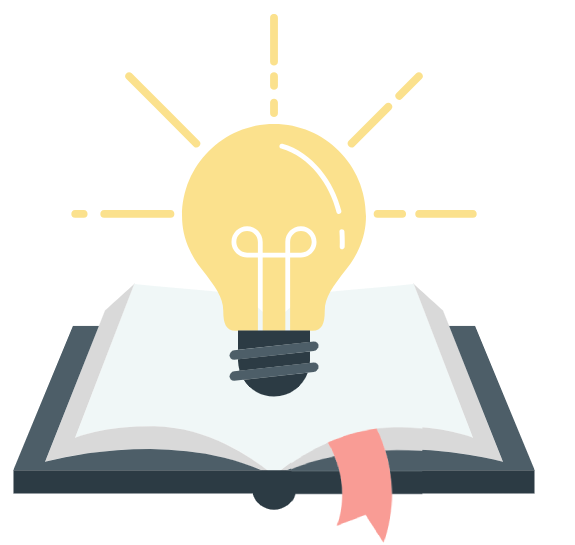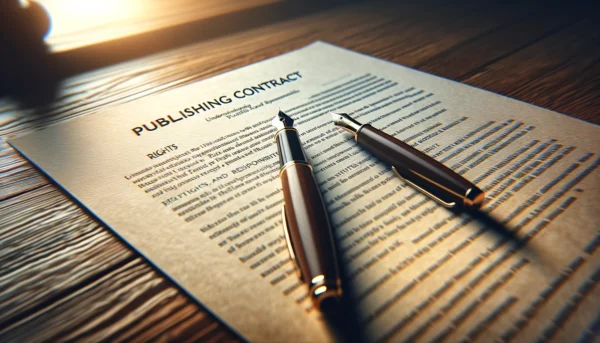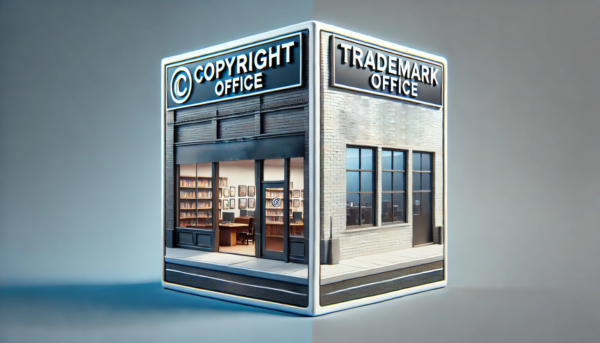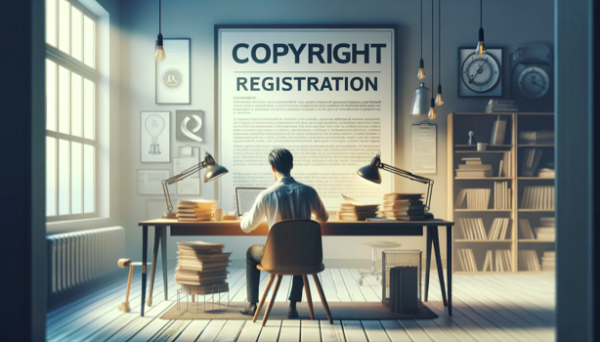So, you’ve poured your heart, soul, and maybe a few late-night snacks into writing your book, and now you’re ready to share it with the world. But there’s one detail that might keep you up at night: fair use. Ah, fair use—the elusive legal doctrine that’s about as clear as a cup of strong coffee at midnight. If you’re self-publishing, it’s tempting to think, “Does this even apply to me?” The answer, of course, is yes—and then some.
Whether you’re using a quote from your favorite classic, an image to complement your storyline, or some other creative element, fair use can be a huge advantage… or a risky pitfall. In the self-publishing world, understanding the boundaries of fair use is like having a map in a maze; it can keep you out of legal trouble and help you confidently navigate your rights. So, let’s break down what fair use really means, and ensure your work is both inspiring and legally sound.
Fair Use for Self-Published Works: What It Means
Let’s get one thing straight—fair use isn’t a free pass to use anything you find on the internet or in your favorite books. It’s a legal concept that lets creators borrow snippets of others’ work, but only under specific conditions. Fair use is like an artful dance around copyright laws; when used correctly, it allows you to add a quote here or reference an image there without violating someone else’s rights. But misstep and you could be looking at some serious infringement claims.
For self-published authors, fair use can be a game-changer. Think of it as your creative toolkit: it lets you weave in references, quotes, or images to enrich your narrative, all while respecting copyright laws. Here’s the catch—fair use is judged by four key factors. These factors—like an ever-watchful bouncer at the copyright club—determine whether your use crosses the line from “fair” to “infringing.” So, as we explore these criteria, keep in mind how they apply to your work, especially if you’re planning to borrow any content that isn’t originally yours.
Pro Tip: Want an easy way to protect your work? Consider adding a copyright notice to your book. It’s a simple statement that reminds others of your ownership. While it’s not required for legal protection, it can help discourage unauthorized use and reinforce your rights in case of any disputes.
Start Your Publishing Journey FOR FREEIntellectual Property Law Basics
Before diving deeper into fair use, let’s cover the essentials of intellectual property (IP) law. Think of IP law as the rules of the creative playground: it’s what protects your original work and lets you claim ownership of everything you’ve poured into your self-published book. In simple terms, intellectual property law covers all kinds of creations—from literary works to inventions—and ensures creators get recognition and control over their work. For authors, this primarily means copyright protection, which kicks in the moment your work is “fixed in a tangible form,” like a finished manuscript.
Understanding IP law is key for self-published authors because it’s not just about defending your work from copycats; for self-publishing authors, it’s also about knowing when you need to obtain permission to use someone else’s material. IP law lays down the groundwork for exclusive rights, such as reproduction and distribution, which give you control over how your work is shared with the world.
Copyright Law and Its Application to Self-Published Books
Copyright law is your shield in the world of self-publishing—it’s what grants you exclusive rights over your work the moment you put it down on paper (or type it into your manuscript software). For authors, this law means that, as the creator, you have control over how your literary masterpiece is copied, distributed, and displayed. Essentially, you own your work and all its potential, from print copies to digital formats and beyond.
In practical terms, copyright law protects your book from unauthorized use by others. This means that others can’t simply copy and paste parts of your work, use your characters in their own stories, or adapt your plot without your permission. As a self-published author, registering your copyright with the U.S. Copyright Office isn’t strictly required but can be hugely beneficial. Registration provides documented proof of your ownership of derivative works, which is invaluable if you ever need to bring a case against someone for infringing on your rights.
Pro Tip: While copyright protection is automatic, officially registering your work with the Copyright Office strengthens your position if legal issues arise. Plus, registration allows you to seek statutory damages and attorney’s fees in federal court if someone infringes on your work, making it much more cost-effective to defend your rights.
The Role of the U.S. Copyright Office
The U.S. Copyright Office is like the official record keeper of creative work. While you automatically own the copyright to your self-published work the moment it’s fixed in a tangible form, registering it with the Copyright Office gives your ownership a formal seal of approval. This registration isn’t just a bureaucratic step—it’s a strategic move for any self-published author serious about protecting their work.
Here’s why it matters: Registration creates a legal record of your work’s authorship and copyright date, which is incredibly helpful if you ever face an infringement claim. If someone tries to use your work without permission, a registered copyright lets you seek statutory damages, attorney’s fees, and other protections that can make a legal case less daunting and potentially more rewarding. Without registration, your options for recourse under the copyright act become a lot more limited.
If your budget allows, consider registering your work sooner rather than later. The process is relatively simple and can usually be done online. Plus, it’s especially worthwhile if you believe your book has high sales potential or might be at risk for unauthorized use. In an industry where every sale counts, having that official registration on record adds a strong layer of security to your work.
Fair Use Doctrine and How It Applies to Self-Published Authors
Now, let’s tackle the core of fair use—the set of rules that allow limited use of copyrighted material without needing permission. Fair use can be a huge asset for self-published authors looking to enrich their work with references, quotes, or visual elements. However, fair use is far from a free-for-all. It’s governed by four main factors that determine whether your use is truly “fair” or if it risks crossing into infringement territory.
Here’s a breakdown of the four factors:
- Purpose and Character of the Use: Courts look favorably on uses that are transformative—meaning they add new meaning, expression, or value to the original work. Educational, research, and commentary use also typically counts as fair. So, if you’re quoting a few lines to provide critique or insight, you may be on solid ground.
- Nature of the Copyrighted Work: Fair use is more lenient with factual works than creative ones. Quoting from a historical text or research study, for example, is often more acceptable than using material from a novel.
- Amount and Substantiality: The less you use, the better. Taking a small, relevant portion of the work is more likely to be seen as fair use than copying entire sections. The idea here is to use “only as much as you need” to make your point or achieve your purpose.
- Effect on the Market: This factor looks at whether your use affects the market value of the original work. If your use could replace the original or harm its sales, you’re less likely to qualify for fair use.
When in doubt, lean toward “transformative use.” For instance, instead of using a passage verbatim, consider paraphrasing and adding your own commentary or analysis. This can help you stay within fair use boundaries and make your work feel even more original.
Navigating Copyright Infringement Risks
As a self-published author, the last thing you want is to get tangled up in a copyright infringement claim. Copyright infringement occurs when someone uses copyrighted material without permission in a way that isn’t covered by fair use. For self-published authors, the best way to avoid infringement claims and risks is to know when and how to seek permission for any content that isn’t originally yours.
One straightforward way to minimize risk is to obtain permission before using any third-party content, such as images, quotes, or excerpts from other works. This can often be done by contacting the copyright holder directly, explaining how you intend to use the material, and requesting their written consent. In some cases, the copyright owner may require a licensing fee, especially if the work is highly valuable or central to your project.
Start Your Publishing Journey FOR FREEAdding a copyright page to your book is another layer of protection. A clear copyright notice reinforces that your work is protected under copyright law, deterring others from unauthorized use and establishing ownership should any issues arise. Even though the copyright page doesn’t guarantee you won’t encounter infringement issues, it makes your rights clear and adds weight to any legal claims you may need to make.
Pro Tip: Think of permission as a “peace of mind” investment. Getting written approval might feel like an extra step, but it saves you from potential legal headaches down the line. If you’re unsure about using specific content, consult a legal professional or opt for Creative Commons-licensed material, which often allows specific uses under certain conditions.
Fair Use and Public Domain: Knowing What’s Safe to Use
The public domain is a self-published author’s best friend—it’s where you’ll find creative works that are free for everyone to use without needing permission. When a work is in the public domain, it means the copyright has either expired, been forfeited, or never existed, making the work available for anyone to reproduce, adapt, or incorporate into new creations.
So, what exactly falls into the public domain? Many older works, particularly those published before 1924, are in the public domain in the United States. Additionally, works created by U.S. government agencies are typically public domain, which means they’re free to use and adapt. Some creators also voluntarily place their works in the public domain, making them accessible to everyone.
Knowing what’s in the public domain can help you enhance your book with rich content without worrying about copyright infringement. However, be cautious—even if a work itself is public domain, certain adaptations or specific editions may still be copyrighted, like annotated versions or new translations.
When to Seek Legal Counsel or Register Your Copyright
While fair use and public domain resources can provide some flexibility, there are times when seeking legal counsel at the relevant copyright office is the best way to protect your work or clarify usage rights. As a self-published author, you might encounter situations where you’re unsure if your planned use of third-party material crosses into copyright infringement. In such cases, consulting a lawyer who specializes in intellectual property can save you from potentially costly mistakes and provide guidance tailored to your unique project.
Another crucial step for self-published authors is copyright registration. Although your work is automatically protected by copyright as soon as it’s in a tangible form, registering it with the Copyright Office offers additional legal advantages. Registration creates an official record of your authorship and copyright date, which strengthens your case if any disputes arise. It also opens the door to statutory damages and attorney’s fees if someone infringes on your work—a valuable benefit that can make defending your rights far more feasible.
At Spines, we make this step easier by offering a free copyright certificate when you upload your manuscript. This added layer of protection ensures you have documented proof of your work’s creation date, providing a clear record of ownership from the start.
Pro Tip: Register your work early, especially if you anticipate high sales or public exposure. Not only does it reinforce your copyright claim, but it also offers peace of mind. If you’re working on a collaborative project, consider drafting a written agreement with co-creators or contributors to establish clear copyright ownership from the start. This proactive approach can help prevent any confusion over rights down the road.
Empowering Self-Published Authors Through Copyright Knowledge
As a self-published author, understanding fair use and copyright isn’t just a legal necessity—it’s a powerful tool to protect and enhance your creative work. From knowing when to leverage fair use to understanding the legal benefits of copyright registration, these insights can help you confidently navigate the world of intellectual property. Whether you’re drawing inspiration from public domain works or carefully considering third-party content, being informed about copyright gives you a solid foundation to share your book with the world while avoiding potential legal pitfalls.
If you’re looking for extra peace of mind, consider uploading your manuscript to Spines. Not only will you gain valuable publishing insights, but you’ll also receive a free copyright certificate, documenting your work’s creation and ownership. This small step can go a long way in protecting your book and strengthening your copyright claim should any issues arise.
By arming yourself with this knowledge, you’re not only safeguarding your work but also embracing your role as a professional author. So, dive into the creative process with confidence, knowing you’ve taken the right steps to protect your creation. With your book in the hands of readers, the peace of mind that comes from understanding copyright law will let you focus on what matters most—telling your story, your way.
Schedule a free 15-minute call to find out more about how Spines can make your publishing dreams come true.
FAQs
Q: What is fair use, and how does it apply to self-published authors?
Fair use is a legal doctrine allowing limited use of copyrighted material without permission, primarily for purposes like criticism, commentary, news reporting, and education. For self-published authors, fair use might apply when quoting or referencing other works, but the use must meet specific criteria to qualify as fair.
Q: Do I need to register my copyright if my work is already protected?
Copyright protection is automatic as soon as your work is fixed in a tangible form. However, registering with the U.S. Copyright Office adds legal advantages, such as the ability to seek statutory damages and attorney’s fees in case of infringement.
Q: How can I know if something is in the public domain and safe to use?
Generally, works published before 1924 in the U.S. are in the public domain. Government works are also typically public domain. Platforms like Project Gutenberg and the Library of Congress offer public domain resources. Checking reliable sources can confirm a work’s status.
Q: What are the main factors that determine fair use?
Fair use is evaluated by four factors: the purpose of use, nature of the copyrighted work, amount used, and effect on the market. Transformative uses, minimal portions, and works that don’t replace the original’s market value are more likely to qualify as fair use.
Q: What should I do if I want to use copyrighted material but am unsure about fair use?
When in doubt, seek permission from the copyright owner. This is especially important for third-party images, lengthy quotes, or any content central to your work. Contacting a legal professional can also clarify whether your intended use is safe.
Q: Does Spines offer any tools to help protect my self-published book?
Yes! When you upload your manuscript to Spines, you’ll receive a free copyright certificate, which provides proof of ownership and creation date, giving you an added layer of protection for your work.
Q: What steps can I take to prevent copyright infringement in my book?
To avoid copyright infringement, only use public domain or Creative Commons-licensed materials, paraphrase when possible, and obtain written permission for any third-party content. Adding a copyright page in your book also helps clarify your ownership and rights.







